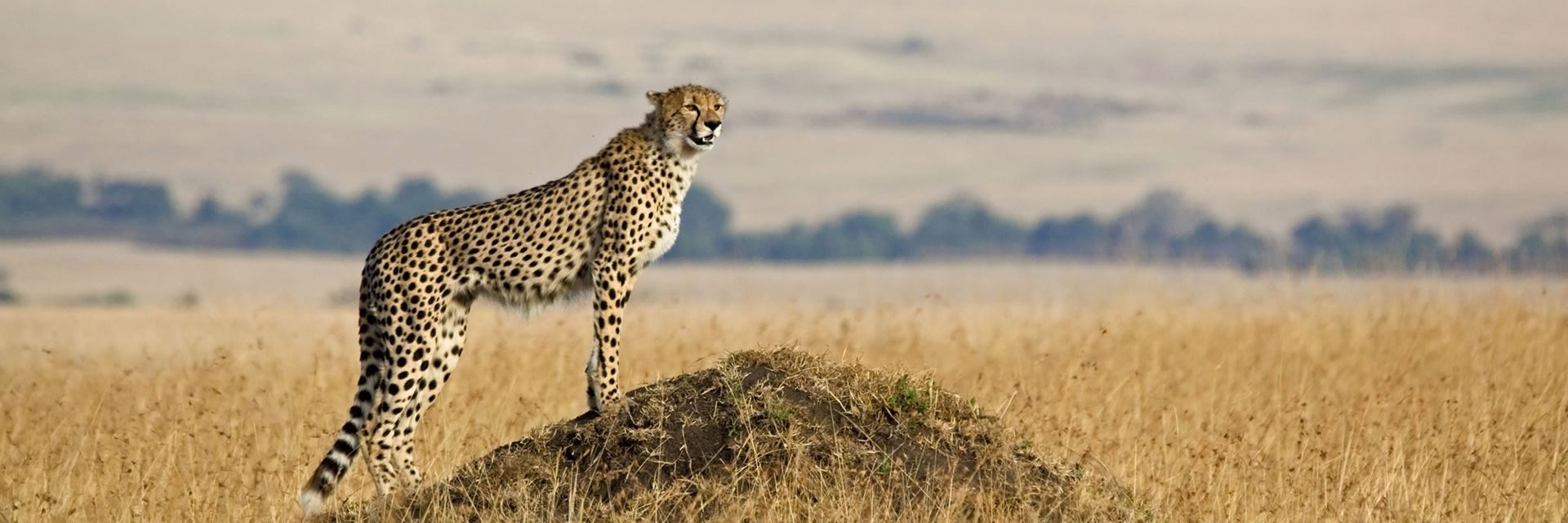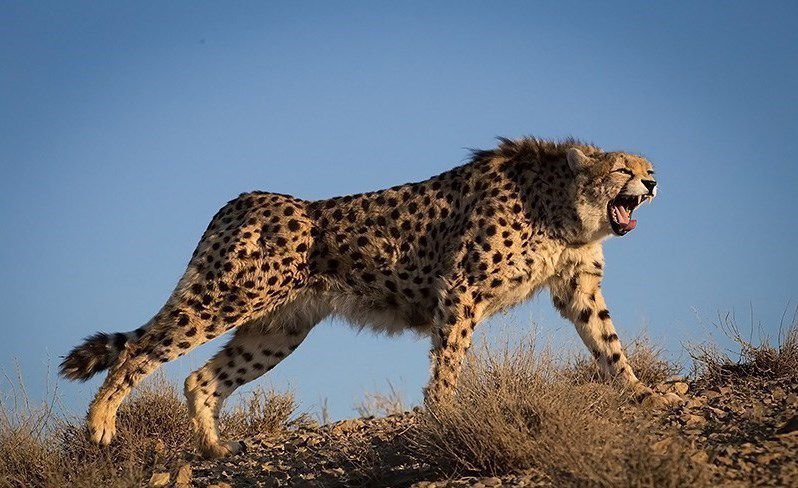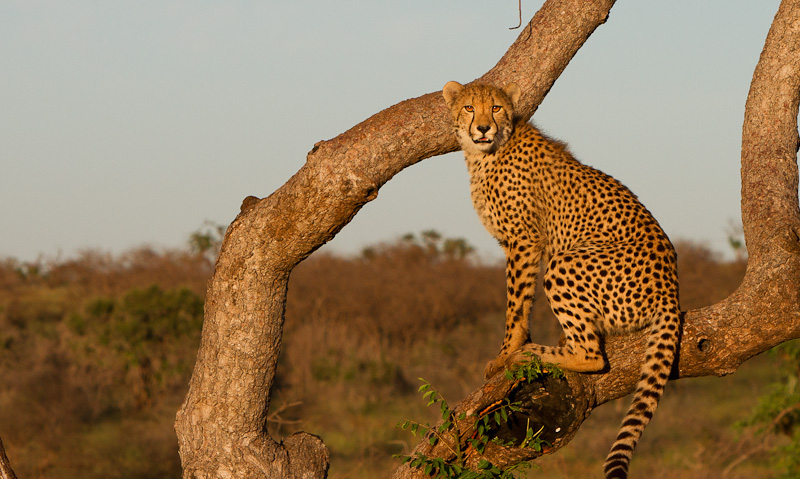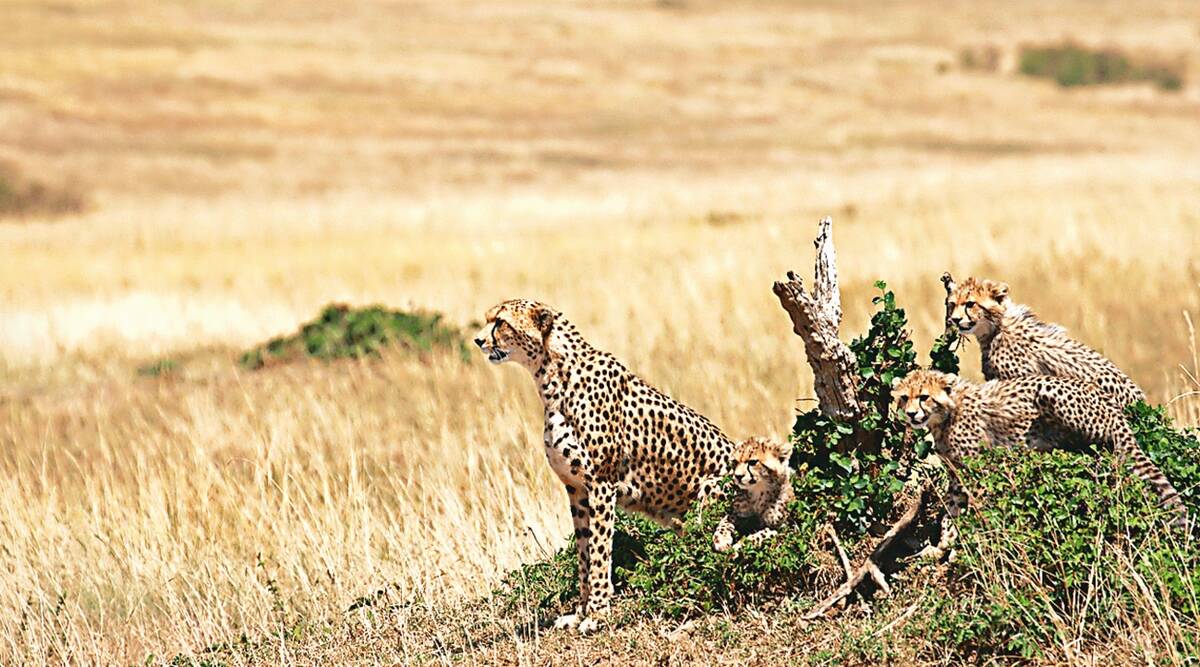





 Cheetahs are tolerant of a wide range of habitats including shrublands, grasslands, savannahs, and temperate to hot deserts. Cheetahs largely stay on the ground but are known to climb trees on occasion. |
 hese carnivores eat small antelope, including springbok, steenbok, duikers, impala and gazelles, as well as the young of larger animals, such as warthogs, kudu, hartebeest, oryx, roan and sable. |

|
Cheetahs are not strong predators, but they are fast. They rely on their speed-up to 70 miles per hour-to catch their prey. Everything about the cheetah is built for speed, from their non-retractable claws that act like cleats for traction, to their long tail that works like a rudder to help them change directions quickly.
As fast as cheetahs are, they can't outrun the threats that they face. Like a lot of animals, cheetahs are losing their habitat, as are the prey animals they need to survive. Cheetahs are also often viewed as pests by ranchers. Ranchers may shoot cheetahs to keep them away from their livestock.
Cheetahs are also known for their spotted coat. The dots are both small and large, and the pattern of spots is unique to each cheetah. The fur of cheetah cubs is darker than that of adults.